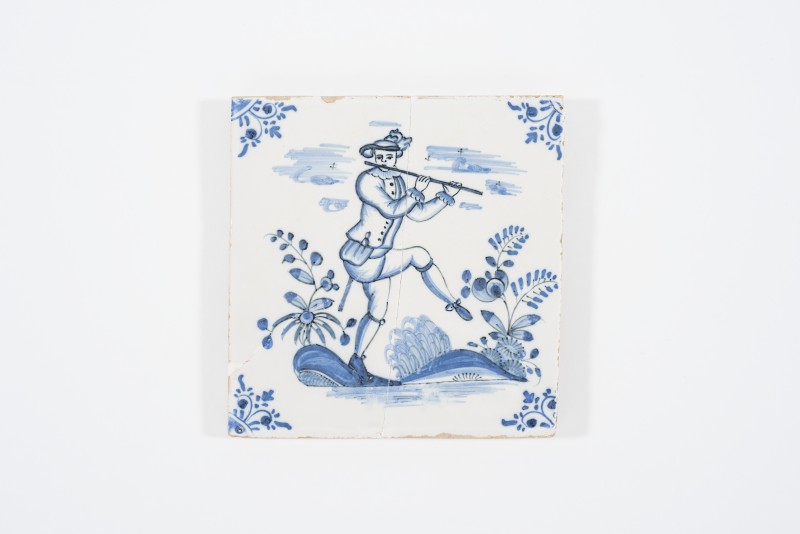Quadratische Fliese mit der Darstellung eines Flötenspielers in hügeliger Landschaft mit erhobenem rechten Bein nach rechts schreitend. Er ist bekleidet mit einem Hut, einer Weste mit Spitzenkragen, Kniebundhosen, Strümpfen und geschnürten Schuhen. Beidseitig hohe Blütensträucher. Der Himmel mit Wolken, in den Ecken Ochsenkopfmotive.
Die Fliese mehrfach gebrochen und restauriert. Die Fehlstellen an den Bruchkanten retuschiert. Zahlreiche Glasurabplatzungen an den Kanten. Die rechte Kante angeschrägt.
Erwerbung unbekannt (alter Bestand)
en

